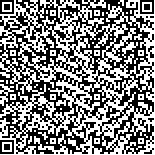朱得婷,张全兵,周云,等.体外冲击波治疗肩关节挛缩的肌源性机制研究[J].中华物理医学与康复杂志,2025,47(10):889-895
扫码阅读全文

|
| 体外冲击波治疗肩关节挛缩的肌源性机制研究 |
|
| |
| DOI:10.3760/cma.j.cn421666-20250314-00224 |
| 中文关键词: 体外冲击波治疗 肩关节挛缩 肌源性 表面肌电 |
| 英文关键词: Extracorporeal shock wave therapy Shoulder joint contracture Myogenesis Surface electromyography |
| 基金项目:安徽省卫生健康科研项目(AHWJ2022b063);安徽医科大学第二附属医院国家自然科学基金孵化计划项目(2022GMFY05);安徽医科大学高峰学科(临床医学)学科建设项目(2022GFXK-EFY08);安徽医科大学2023年学科建设项目(2023lcxkEFY010);安徽省卫生健康科研项目(AHWJ2023A30077) |
|
| 摘要点击次数: 550 |
| 全文下载次数: 402 |
| 中文摘要: |
| 目的 探讨体外冲击波治疗肩关节挛缩的肌源性机制。 方法 临床实验募集肩关节挛缩患者68例,按随机数字表法分为常规治疗组34例和体外冲击波组34例。常规治疗组给予常规康复治疗,体外冲击波组在此基础上增加体外冲击波治疗。动物实验选取SD大鼠24只,按随机数字表法分为空白对照组、模型组、自然恢复组、体外冲击波动物组,每组6只大鼠。模型组、自然恢复组、体外冲击波动物组均采用左肩关节石膏固定法进行造模。空白对照组大鼠不做任何干预,模型组大鼠仅造模成功(不做其它干预),自然恢复组大鼠造模完成后再常规饲养2周,体外冲击波动物组则在造模完成后接受2周的体外冲击波干预。临床试验和动物实验的体外冲击波治疗均为每周治疗2 d(每周二和周五),连续治疗2周。于治疗前和治疗2周后(治疗后)评估2组患者的视觉模拟评分(VAS)、肩关节活动度和肩周肌肉表面肌电的均方根值(RMS)。于体外冲击波动物组治疗2周后(治疗后)评估4组大鼠的肩关节活动度,并于治疗后对4组大鼠进行冈上肌组织学分析。 结果 治疗后,2组患者的VAS评分、主动和被动肩关节活动度以及RMS值较组内治疗前均显著改善(P<0.05),且体外冲击波组治疗后肩关节主动前屈、被动前屈、主动外展、被动外展的角度和三角肌、肱二头肌、肱三头肌RMS值均显著优于常规治疗组治疗后。治疗后,模型组大鼠左肩关节外展角度为(96.00±2.37)°,自然恢复组左肩关节外展角度为(103.00±4.05)°,体外冲击波动物组为(121.33±4.89)°,均显著低于空白对照组的(154.50±2.35)°(P<0.05)。治疗后,自然恢复组和体外冲击波动物组的左肩关节外展角度均显著高于模型组,且体外冲击波动物组的左肩关节外展角度亦显著高于自然恢复组,差异均有统计学意义(P<0.05)。治疗后,模型组大鼠左冈上肌的肌纤维横截面积和胶原占比与空白对照组比较,差异均有统计学意义(P<0.05),而体外冲击波动物组左冈上肌的肌纤维横截面积和胶原占比均显著优于自然恢复组(P<0.05)。 结论 肩关节挛缩伴随着显著的肌源性改变(肌萎缩和肌纤维化),体外冲击波治疗可有效地改善这一肌源性病理变化,增强肌力,并促进功能恢复。 |
| 英文摘要: |
| Objective To explore any myogenic effect of extracorporeal shock wave therapy (ESWT) on shoulder joint contracture. Methods Sixty-eight patients with shoulder contracture were enrolled and randomly divided into a conventional therapy group (n=34) and an ESWT group (n=34) for this clinical trial. The conventional therapy group received standard rehabilitation treatment, while the ESWT group received additional extracorporeal shock wave therapy. In addition, 24 Sprague-Dawley rats were randomly assigned to a blank control group, a model group, a natural recovery group, or an ESWT animal group, each of 6. All of the groups except the blank control group had contracture modeled using plaster cast immobilization of the left shoulder joint. After successful modeling, the natural recovery group was routinely raised for two weeks, while the ESWT animal group received two weeks of extracorporeal shock wave intervention. In both the clinical and animal experiments, ESWT was administered twice weekly (every Tuesday and Friday) for two consecutive weeks. Before and after the treatment, the patient groups were assessed using a visual analog scale (VAS) for pain, shoulder range of motion (ROM), and the root mean square (RMS) values of the surface electromyographs of the peri-shoulder muscles. Shoulder ROM was assessed in all four of the rat groups after the ESWT treatment, and histological analysis of the supraspinatus muscle was performed. Results After the treatment, both patient groups showed significant improvements in their average VAS scores, active and passive shoulder ROM, and RMS values. On average, the ESWT group demonstrated significantly greater improvements than the conventional therapy group in active forward flexion, passive forward flexion, active abduction, passive abduction, and the RMS values of the deltoid, biceps brachii, and triceps brachii muscles. After the treatment the left shoulder abduction angle had been reduced significantly in the model group (to 96.00±2.37)°, the natural recovery group (103.00±4.05)° and the ESWT animal group (121.33±4.89)° compared to the blank control group (154.50±2.35)°. Both the natural recovery group and the ESWT animal group had significantly greater shoulder abduction angles than the model group, and the ESWT animal group also demonstrated a significantly larger abduction angle than the natural recovery group. After the treatment, significant differences between the model group and the blank control group were observed in the cross-sectional area of left supraspinatus muscle fibers and the proportion of collagen. The ESWT animal group too exhibited significantly improved muscle fiber cross-sectional area and collagen proportion compared to the natural recovery group. Conclusions Shoulder joint contracture is accompanied by significant myopathic changes (muscle atrophy and fibrosis). ESWT effectively ameliorates these problems while enhancing muscle strength and functional recovery. |
|
查看全文
查看/发表评论 下载PDF阅读器 |
| 关闭 |
|
|
|